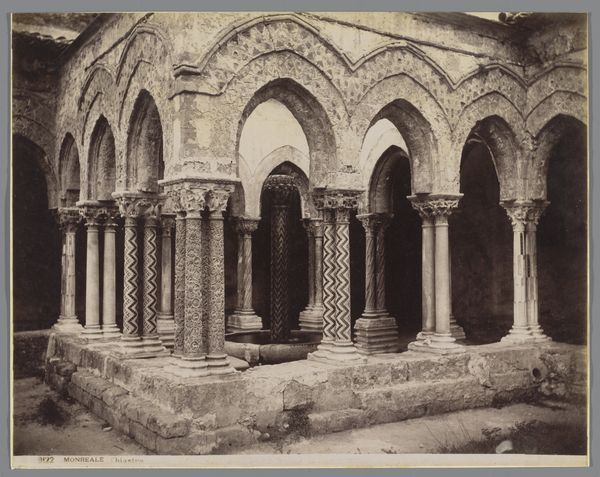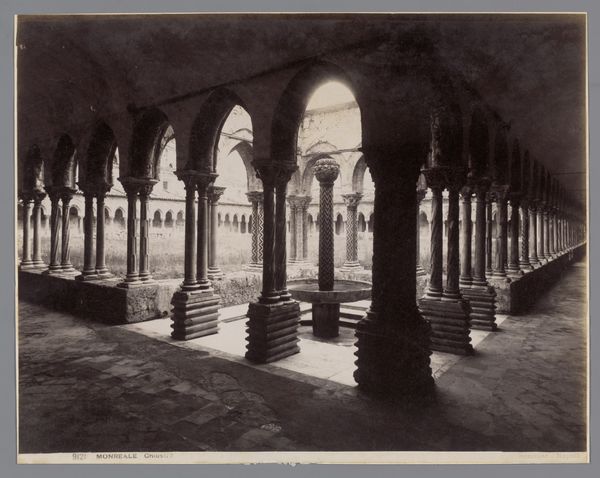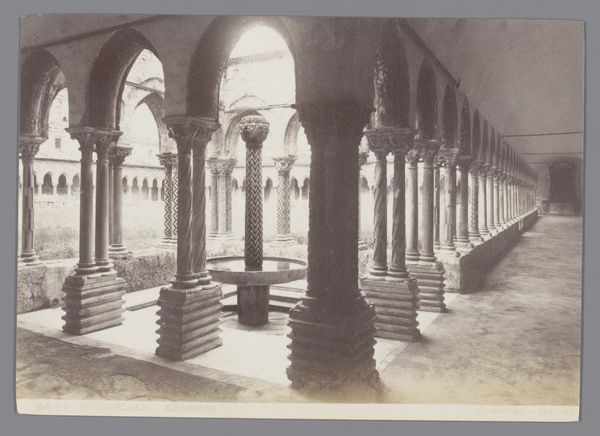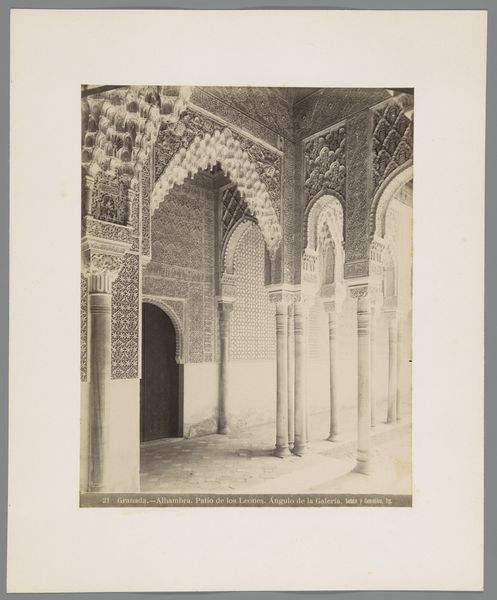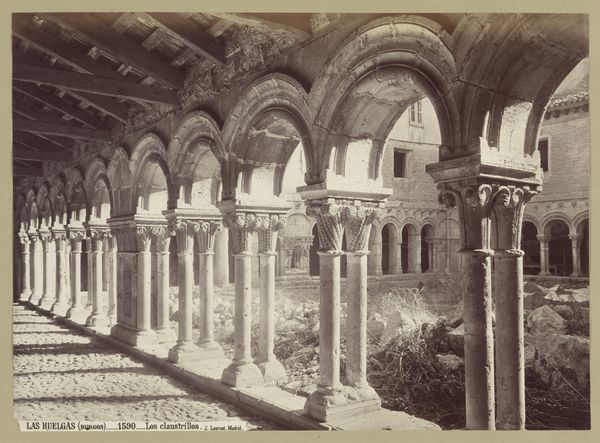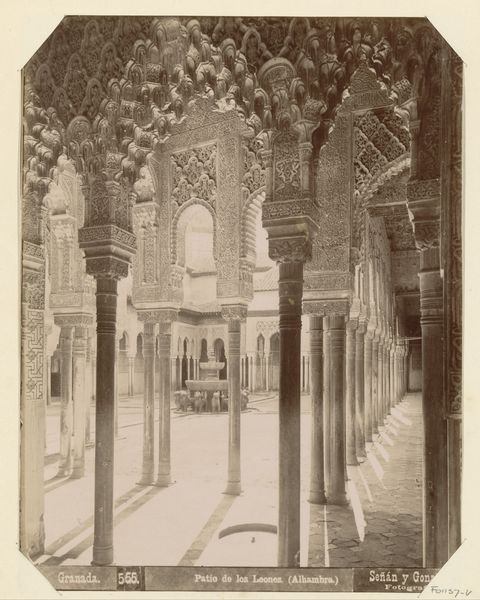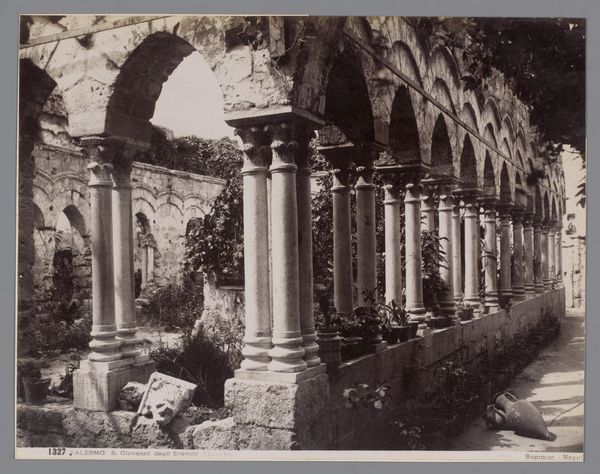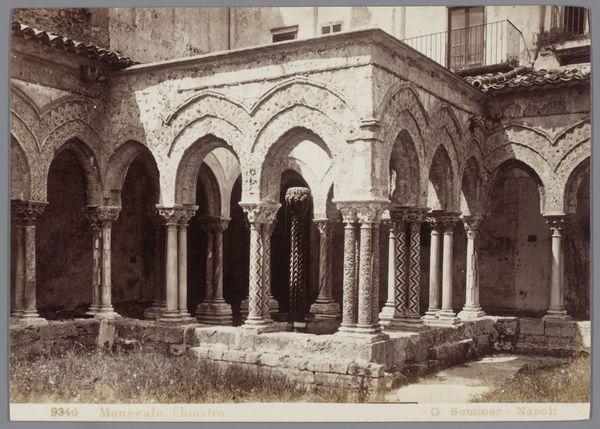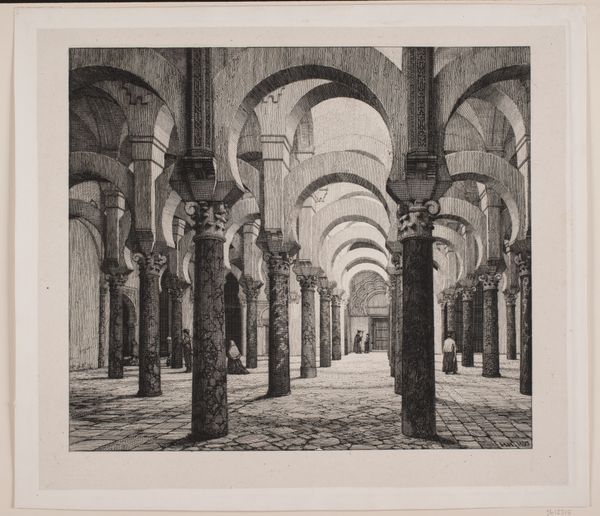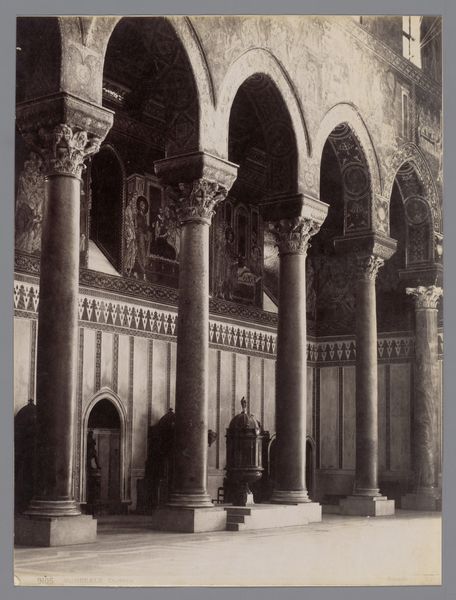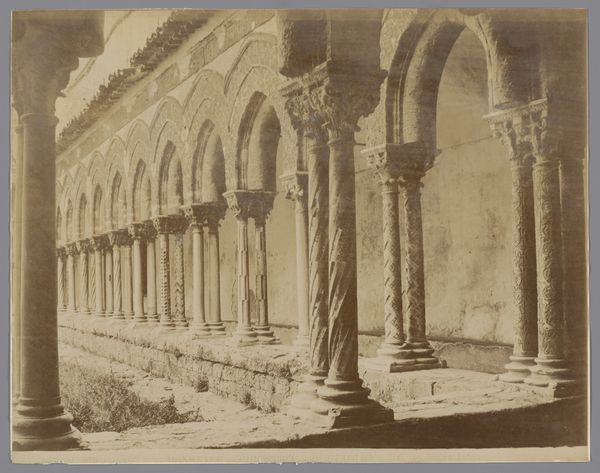
print, photography, architecture
#
medieval
# print
#
landscape
#
photography
#
romanesque
#
architecture
Dimensions: height 238 mm, width 289 mm
Copyright: Rijks Museum: Open Domain
Curator: This print, dating roughly from 1857 to 1914, offers a view of the cloister of Monreale Cathedral in Sicily. It's attributed to Giorgio Sommer and held here at the Rijksmuseum. What strikes you about it? Editor: The rhythm, primarily. The play of light across the repeated arches and columns creates a powerful sense of depth and order. There is such interesting geometry present throughout the building elements in the space, a mathematical ratio found only in nature is exemplified, such beautiful harmony is communicated. Curator: Indeed. Considering that architecture, and especially religious spaces, can be seen as reflections of power structures, how does this Romanesque space from Monreale strike you? Editor: In many respects it embodies, quite literally, the hegemonic structure that produces architecture as a cultural artifice. But I want to unpack what it means to perform religious architecture; how did the Norman-Byzantine identity contribute to or challenge coloniality and social hierarchy here in Sicily? Curator: Absolutely. Sicily, especially in the medieval period, was a crossroads of cultures. Sommer’s photograph captures the Arab influences too, integrated with Christian art and Byzantine mosaics. Consider how the play of shadow emphasizes the material substance. Editor: Yes, the contrast amplifies that aesthetic of solidity. Each structural element makes a statement through material choice; we might decode it, and arrive at new understandings of visual syntax as a sort of silent power dynamic. I am thinking of Foucault and "The Eye of Power" theory when viewing this photographic rendering. Curator: The photographer captures not just the architectural form but also something about the historical moment of encounter between these empires. It’s a place that was influenced and impacted, generation after generation, with the weight and legacy of empires across the water and over land, impacting society. Editor: It reminds me that every column and arch carries embedded codes. To what extent do these symbols influence us as viewers, and what implications exist if we begin to understand how material language impacts subjectivity? It gives me a feeling of wonder thinking of these dialogues of influence in an ancient religious institution that's rendered so carefully in the captured medium of photography. Curator: So, this print then shows us a great intersection: culture and history; colonialism and power; even photography and architecture intersect with social history. Editor: Precisely! The piece inspires so much deeper thinking that's far more rich than simple art history.
Comments
No comments
Be the first to comment and join the conversation on the ultimate creative platform.
